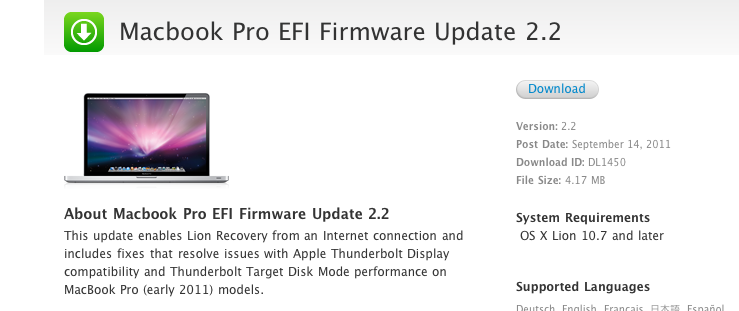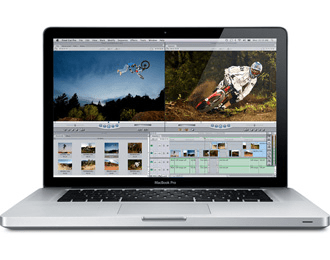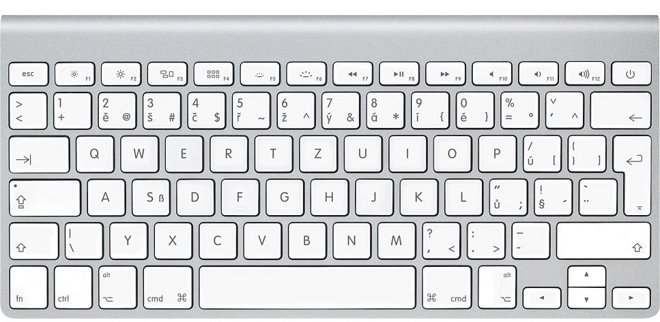If you bought a Mac in 2011, you’ve got some firmware to download. Apple on Thursday issued four EFI firmware updates, one for each Mac model released by the company last year.


That said, Apple's official list also has exceptions: if you have the right Mac Pro you can install Mojave on even a mid-2010 machine. We get that you may well not be able to afford a new Mac. The MacBook Pro Late 2011 is not listed on the Windows 10 compatibility charts.But really, here's the guide for installing and setting up Windows on a Mac support. Use Software Update Choose System Preferences from the Apple menu , then click Software Update to check for updates. If any updates are available, click the Update Now button to install them. Or click “More info” to see details about each update and select specific updates to install. MacBook Pro 15' Unibody Early 2011. Released February 2011 / 2.0, 2.2, or 2.3 GHz Quad-core Intel Core i7 Processor. I have an early 2011 Macbook Pro (see attached screenshot) that has been acting very slow lately, even after a clean installation of the operating system. I am in no way a Mac expert but did some research online and the 2 easiest ways to fix the issue seems to be: 1. Upgrade the RAM My Macbook Pro currently has 4GB or RAM.
Mac mini EFI Firmware Update 1.6 covers Mac mini models released last summer. MacBook Air EFI Firmware Update 2.4 targets the laptops that came out in mid-2011. iMac EFI Firmware Update 1.9 is intended for the desktop machines that debuted last May, while MacBook Pro EFI Firmware Update 2.7 covers laptops released in both early 2011 and later that year.
All four updates promise to improve stability in the targeted systems while fixing several issues. Specifically, the release notes for each firmware update state that the download will improve the reliability of booting from the network and address an issue that can prevent HDCP authentication after a reboot. The updates also tackle an issue with boot device selection when you’ve got a hot-plugged USB storage device.
The updates are available from Mac OS X’s Software Update or on Apple’s Support website. The updates require Mac OS X 10.7.3.
Use Software Update
Upgrade For Macbook Pro 2011
- Choose System Preferences from the Apple menu , then click Software Update to check for updates.
- If any updates are available, click the Update Now button to install them. Or click “More info” to see details about each update and select specific updates to install. You might be asked to enter your administrator password.
- When Software Update says that your Mac is up to date, the installed version of macOS and all of its apps are also up to date. That includes Safari, Music, Photos, Books, Messages, Mail, Calendar, and FaceTime.
- To automatically install future updates, including for apps that you got from the App Store, select “Automatically keep my Mac up to date.” Your Mac will notify you when updates require it to restart, so you can always choose to install those later.
Update the software on your iPhone, iPad, or iPod touch
Software Update For Macbook Pro Late 2011

Learn how to update your iPhone, iPad, or iPod touch to the latest version of iOS or iPadOS.

Update For Macbook Pro Late 2011
Learn more

- Learn how to get updates for earlier versions of macOS that don't include Software Update preferences.
- You can also use the App Store to update apps or redownload apps that came from the App Store.
- Learn which macOS your Mac is using and how to upgrade to the latest macOS.
- When your Mac is connected to a Personal Hotspot, large updates don't download automatically.
